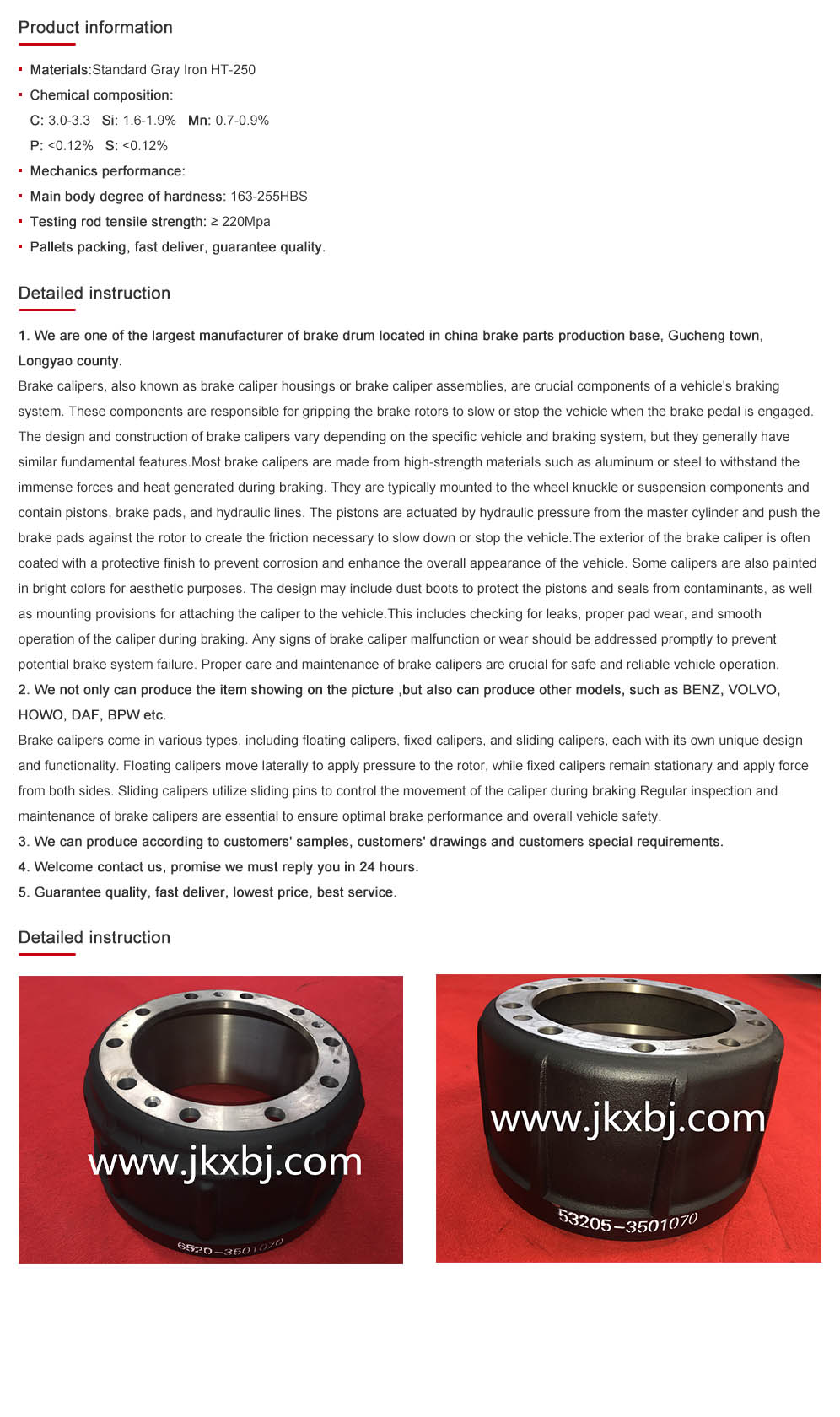Nov . 04, 2024 17:14 Back to list
Advancements in Lightweight Brake Drum Technology for Enhanced Performance and Efficiency
The Evolution and Benefits of Lightweight Brake Drums
In the world of automotive engineering, the quest for performance and efficiency has led to significant innovations in vehicle components. One such advancement is the development of lightweight brake drums. These components, often overshadowed by their disc counterparts, play a critical role in the braking system of many vehicles, particularly in certain commercial applications and classic cars. This article delves into the evolution, materials, and benefits of lightweight brake drums.
Understanding Brake Drums
Brake drums work in conjunction with brake shoes to slow down or stop a vehicle. When the brake pedal is pressed, hydraulic pressure pushes the brake shoes against the inner surface of the drum, creating friction that slows the vehicle. Traditionally, these drums have been made from cast iron, which, while durable, is also heavy. This weight can affect the overall performance of a vehicle, particularly in terms of acceleration, fuel efficiency, and handling.
The Shift to Lightweight Materials
With the automotive industry focusing on improved fuel efficiency and reduced emissions, the demand for lighter components has surged. This has sparked the development of lightweight brake drums made from alternative materials, such as aluminum alloys, composites, and advanced polymers. These materials not only reduce weight but also provide enhanced thermal management and resistance to corrosion.
Aluminum, for instance, has become a popular choice for lightweight brake drums due to its excellent strength-to-weight ratio. By switching to aluminum, manufacturers can potentially reduce the weight of the brake system by up to 30%, depending on the design and application. This reduction in weight contributes to improved handling and acceleration, as well as enhanced fuel efficiency.
Benefits of Lightweight Brake Drums
lightweight brake drums

1. Improved Fuel Efficiency One of the most significant advantages of lightweight brake drums is their contribution to overall vehicle weight reduction. A lighter vehicle requires less energy to move, which translates to better fuel efficiency. This is particularly important as automakers and consumers alike seek to minimize fuel costs and environmental impact.
2. Enhanced Performance Reduced unsprung weight (the weight of components not supported by the suspension) means that the vehicle can respond more quickly to road imperfections and driver inputs. This leads to better handling and performance, particularly in high-performance and racing applications.
3. Better Heat Dissipation Lightweight materials often offer superior thermal conductivity compared to traditional options. This means that brake drums can dissipate heat more effectively, reducing the risk of brake fade and improving overall braking performance. The ability to manage heat is crucial, especially in high-stress driving conditions such as heavy towing or racing.
4. Longer Lifespan and Reduced Maintenance Aluminum and composite materials resist rust and corrosion, often outperforming traditional cast iron in these areas. As a result, vehicles fitted with lightweight brake drums may require less frequent maintenance and experience a longer lifespan, benefiting both users and manufacturers.
5. Sustainability As the automotive industry shifts towards more sustainable practices, lightweight brake drums contribute by reducing the overall carbon footprint of vehicles. Lighter cars require less energy for propulsion, which can lead to lower greenhouse gas emissions.
Future Directions
As the vehicle market continues to evolve, the push for lightweight components will likely grow stronger. Innovations in materials science and production techniques promise even more advanced and efficient brake drum designs. Research is ongoing into bio-composites and other environmentally friendly materials that can further reduce weight while maintaining performance and safety standards.
In conclusion, lightweight brake drums represent a pivotal innovation in automotive engineering that enhances performance, efficiency, and sustainability. As the industry progresses towards greener technologies, the adoption of these advanced components will likely become a standard practice, setting a new benchmark for the future of vehicular design and performance. Whether in commercial applications or regular passenger vehicles, the benefits of lightweight brake drums will be felt by drivers and manufacturers alike for years to come.
-
Scania Brake Drums: OEM Quality for Optimal Safety & Durability
NewsAug.16,2025
-
R.V.I: Advanced Remote Visual Inspection for Precision
NewsAug.15,2025
-
Discover HYUNDA: Innovative Vehicles, Equipment & Solutions
NewsAug.14,2025
-
R.V.I: Unlock Advanced Insights & Real-time Performance
NewsAug.13,2025
-
Kamaz Brake Drum: Durable & Reliable for Heavy Duty Trucks
NewsAug.12,2025
-
Heavy Duty Iveco Brake Drum - Premium Quality & Safety
NewsAug.11,2025
